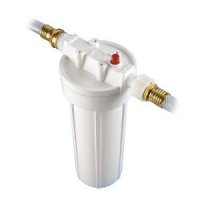Are there tips and tricks for keeping tank-stored water drinkable?
I put about 10g each into my port- and starboard tanks a couple of months ago. Have used it on occasion to rinse things off, wash hands, etc. But.... wondering what kinds of beasties might be inhabiting those tanks has so far kept me from drinking it.
Now that the cruising season is here, I'd like to be able to. So.... should I flush out the tanks with something? keep them empty until needed? Keep them full? Treat the water with something?
Would welcome any tips. Not only for keeping the water potable, but knowing when it isn't. Yeah, if it comes out green or smelling nasty, I'd probably be able to figure that out, but if it "looks" clear and fresh... is it?
Bruce
I put about 10g each into my port- and starboard tanks a couple of months ago. Have used it on occasion to rinse things off, wash hands, etc. But.... wondering what kinds of beasties might be inhabiting those tanks has so far kept me from drinking it.
Now that the cruising season is here, I'd like to be able to. So.... should I flush out the tanks with something? keep them empty until needed? Keep them full? Treat the water with something?
Would welcome any tips. Not only for keeping the water potable, but knowing when it isn't. Yeah, if it comes out green or smelling nasty, I'd probably be able to figure that out, but if it "looks" clear and fresh... is it?
Bruce

